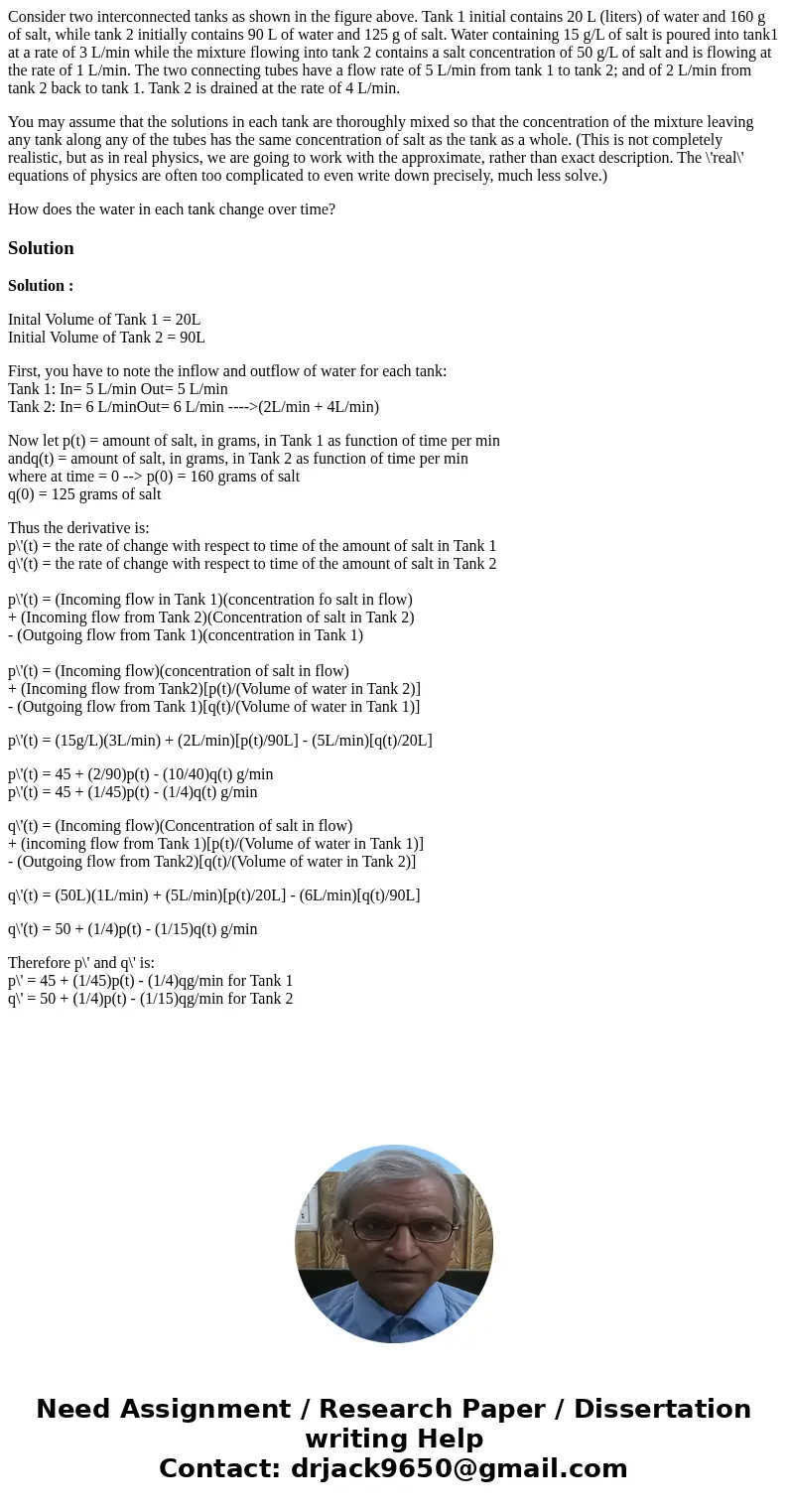Consider two interconnected tanks as shown in the figure abo
Consider two interconnected tanks as shown in the figure above. Tank 1 initial contains 20 L (liters) of water and 160 g of salt, while tank 2 initially contains 90 L of water and 125 g of salt. Water containing 15 g/L of salt is poured into tank1 at a rate of 3 L/min while the mixture flowing into tank 2 contains a salt concentration of 50 g/L of salt and is flowing at the rate of 1 L/min. The two connecting tubes have a flow rate of 5 L/min from tank 1 to tank 2; and of 2 L/min from tank 2 back to tank 1. Tank 2 is drained at the rate of 4 L/min.
You may assume that the solutions in each tank are thoroughly mixed so that the concentration of the mixture leaving any tank along any of the tubes has the same concentration of salt as the tank as a whole. (This is not completely realistic, but as in real physics, we are going to work with the approximate, rather than exact description. The \'real\' equations of physics are often too complicated to even write down precisely, much less solve.)
How does the water in each tank change over time?
Solution
Solution :
Inital Volume of Tank 1 = 20L
Initial Volume of Tank 2 = 90L
First, you have to note the inflow and outflow of water for each tank:
Tank 1: In= 5 L/min Out= 5 L/min
Tank 2: In= 6 L/minOut= 6 L/min ---->(2L/min + 4L/min)
Now let p(t) = amount of salt, in grams, in Tank 1 as function of time per min
andq(t) = amount of salt, in grams, in Tank 2 as function of time per min
where at time = 0 --> p(0) = 160 grams of salt
q(0) = 125 grams of salt
Thus the derivative is:
p\'(t) = the rate of change with respect to time of the amount of salt in Tank 1
q\'(t) = the rate of change with respect to time of the amount of salt in Tank 2
p\'(t) = (Incoming flow in Tank 1)(concentration fo salt in flow)
+ (Incoming flow from Tank 2)(Concentration of salt in Tank 2)
- (Outgoing flow from Tank 1)(concentration in Tank 1)
p\'(t) = (Incoming flow)(concentration of salt in flow)
+ (Incoming flow from Tank2)[p(t)/(Volume of water in Tank 2)]
- (Outgoing flow from Tank 1)[q(t)/(Volume of water in Tank 1)]
p\'(t) = (15g/L)(3L/min) + (2L/min)[p(t)/90L] - (5L/min)[q(t)/20L]
p\'(t) = 45 + (2/90)p(t) - (10/40)q(t) g/min
p\'(t) = 45 + (1/45)p(t) - (1/4)q(t) g/min
q\'(t) = (Incoming flow)(Concentration of salt in flow)
+ (incoming flow from Tank 1)[p(t)/(Volume of water in Tank 1)]
- (Outgoing flow from Tank2)[q(t)/(Volume of water in Tank 2)]
q\'(t) = (50L)(1L/min) + (5L/min)[p(t)/20L] - (6L/min)[q(t)/90L]
q\'(t) = 50 + (1/4)p(t) - (1/15)q(t) g/min
Therefore p\' and q\' is:
p\' = 45 + (1/45)p(t) - (1/4)qg/min for Tank 1
q\' = 50 + (1/4)p(t) - (1/15)qg/min for Tank 2

 Homework Sourse
Homework Sourse